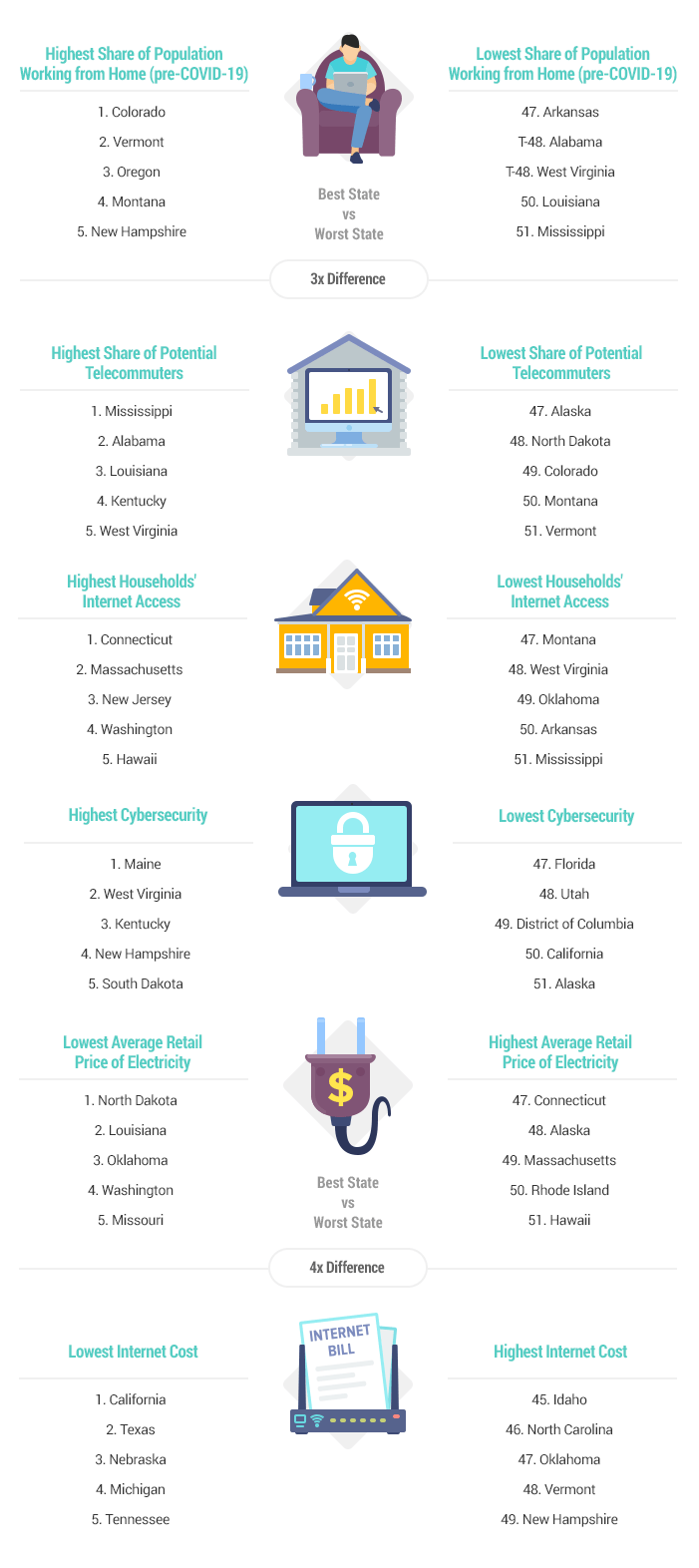Forced to stay indoors, which states have the infrastructure best suited for remote working conditions?
Exceeding 4 million confirmed cases as of the May 12 tally, the COVID-19 pandemic continues to exert pressure on the world’s economies and health systems.
Before the pandemic, only about a quarter of the U.S. workers have the ability to work from home at some level. In order to dampen the blow of the coronavirus, companies have turned to remote working setups in order to continue their operations at some capacity. Without a doubt, this figure has since increased significantly.
This pandemic has definitely challenged the status quo of the workplace, bringing about changes which might stick around long after the end of the pandemic.
Which states are best equipped for this challenging transition to remote working? This is the question that WalletHub wanted to answer in their recent study.
Comparing the 50 states and the District of Columbia, WalletHub measured several key metrics to assess which states provide the best conditions for working from home. Here are the results.
Highlights
| Rank/State | Overall Score |
| 1. Delaware | 68.17 |
| 2. Washington | 64.08 |
| 3. New Hampshire | 63.96 |
| 4. Colorado | 63.80 |
| 5. Georgia | 62.70 |
| 6. Arizona | 62.45 |
| 7. Utah | 62.23 |
| 8. Oregon | 61.84 |
| 9. North Carolina | 61.40 |
| 10. South Dakota | 61.20 |
Delaware gained the top spot in terms of their provision of conditions suited for remote work, with an overall score of 68.17. The state performed relatively well in terms of both work and living environment conditions that facilitate working from home.
With a score of 64.08, Washington takes the second spot. The state is among those with the highest internet access levels as well as the lowest average retail price of electricity.
In third place is New Hampshire with an overall score of 63.96. Apart from having among the best conditions for remote work, it is also one of the states with the highest share of their population actually working from home even before COVID-19.
Sharing this distinction — and even surpassing it — is fourth place Colorado (63.80). The state ranks first in terms of the percentage of people working from home pre-COVID-19.
Other states in the top ten are Georgia (62.70), Arizona (62.45), Utah (62.23), Oregon (61.84), North Carolina (61.40), and South Dakota (61.20).
Shown below is a further breakdown of the rankings based on remote work-related attributes.
Methodology
In order to assess the suitability of each state and the District of Columbia for a remote working setup, WalletHub considered two key dimensions. Under these two dimensions are 12 metrics.
01. Work Environment (60%)
- Share of Workers Working from Home (pre-COVID-19)
- Share of Potential Telecommuters
- Households’ Internet Access
- Cybersecurity
02. Living Environment (40%)
- Average Retail Price of Electricity
- Access to Low-priced Internet Plan
- Internet Cost
- Median Square Footage per Average Number of Persons in a Household
- Share of Detached Housing Units
- Average Home Square Footage
- Share of for Sale Homes with Lot Greater than 1,000 Square Feet
- Share of for Sale Homes with Swimming Pool
Each metric is graded using a 100-point scale, with 100 representing the best possible score. The weighted average of these metrics was then used in order to compute the overall score used as the basis for the rankings.











